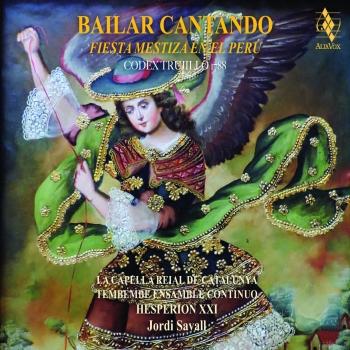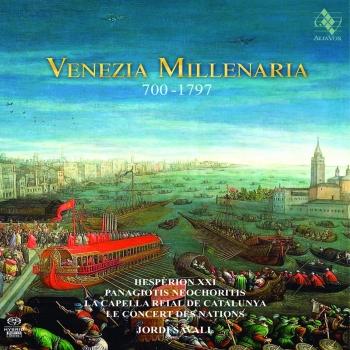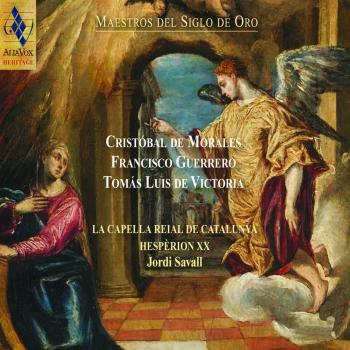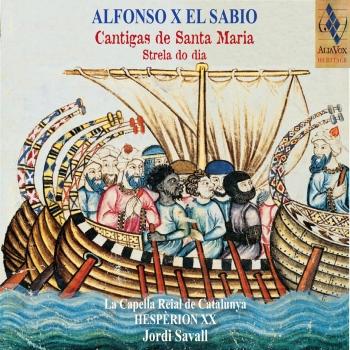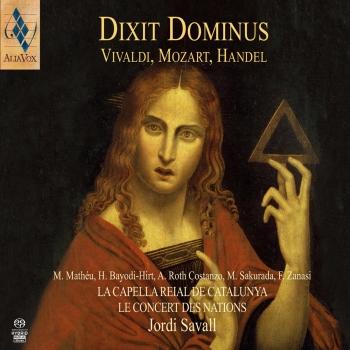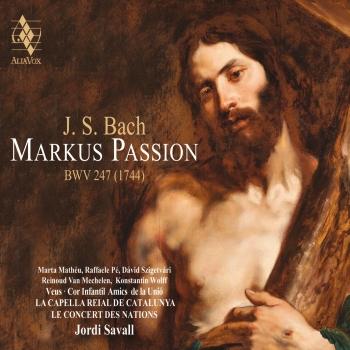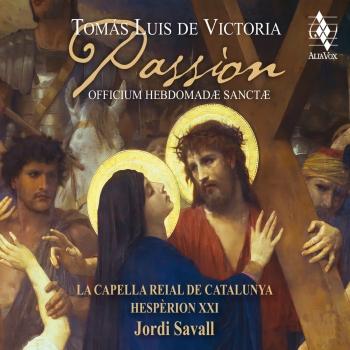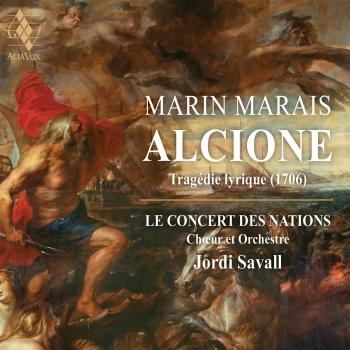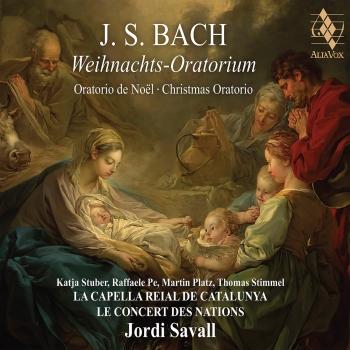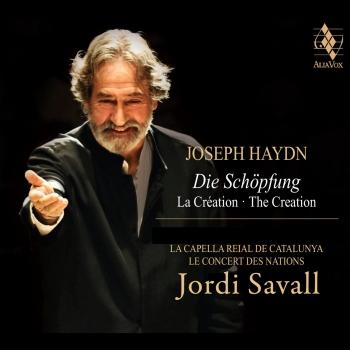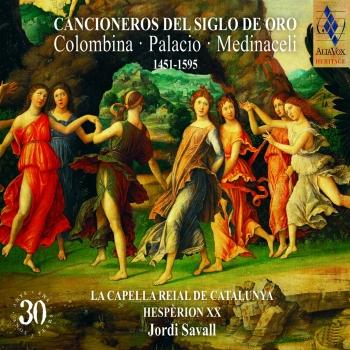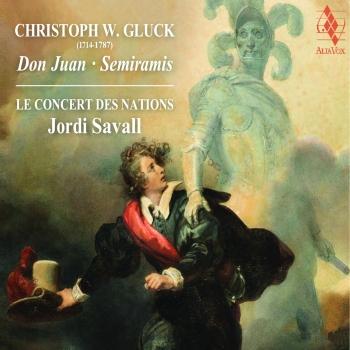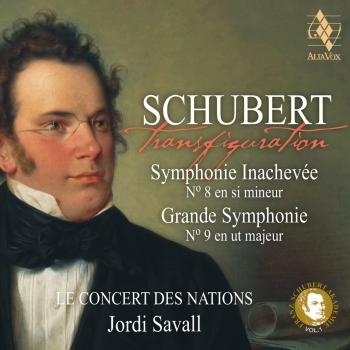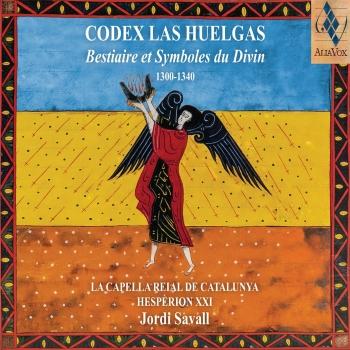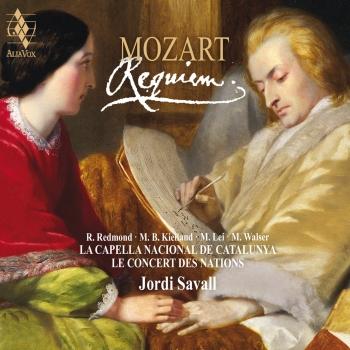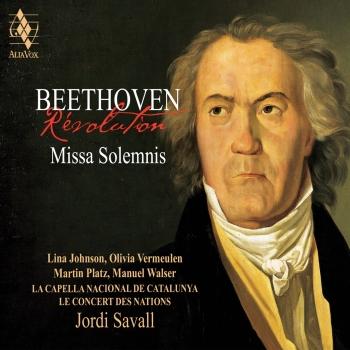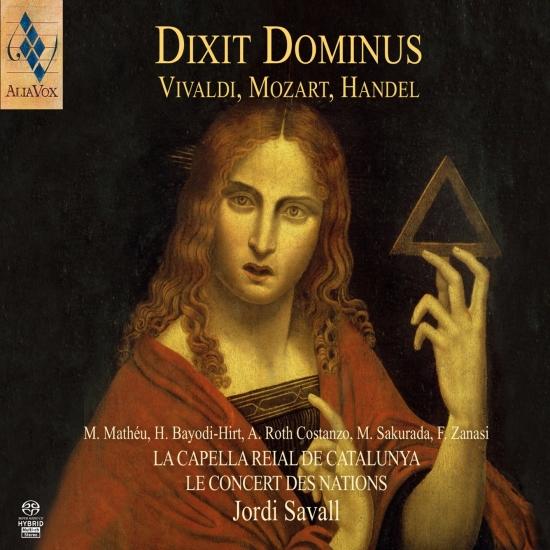
Dixit Dominus Jordi Savall
Album info
Album-Release:
2016
HRA-Release:
28.03.2019
Label: Alia Vox
Genre: Classical
Subgenre: Vocal
Artist: Jordi Savall
Composer: George Frideric Handel (1685-1759), Wolfgang Amadeus Mozart (1756 –1791), Antonio Vivaldi (1678-1741)
Album including Album cover
- Antonio Vivaldi (1678 - 1741): Dixit Dominus, RV 595:
- 1Dixit Dominus, RV 595: I. Chorus "Dixit Dominus"02:19
- 2Dixit Dominus, RV 595: II. Chorus "Donec ponam"02:59
- 3Dixit Dominus, RV 595: III. Aria "Virgam virtutis"02:18
- 4Dixit Dominus, RV 595: IV. Duet "Tecum principium"02:05
- 5Dixit Dominus, RV 595: V. Chorus "Juravit Dominus"01:35
- 6Dixit Dominus, RV 595: VI. Aria "Dominus a dextris tuis"01:46
- 7Dixit Dominus, RV 595: VII. Chorus "Judicabit in nationibus"03:26
- 8Dixit Dominus, RV 595: VIII. Aria "De torrente in via bibet"02:57
- 9Dixit Dominus, RV 595: IX. Trio "Gloria Patri"01:47
- 10Dixit Dominus, RV 595: X. Chorus "Sicut erat in principio"00:54
- 11Dixit Dominus, RV 595: XI. Chorus "Et in saecula saeculorum"02:58
- Wolfgang Amadeus Mozart (1756 - 1791): Dixit & Magnificat, K. 193:
- 12Dixit & Magnificat, K. 193: I. Allegro "Dixit Dominus"03:04
- 13Dixit & Magnificat, K. 193: II. Andante "Gloria Patri"00:34
- 14Dixit & Magnificat, K. 193: III. Allegro "Et in saecula saeculorum"01:16
- 15Dixit & Magnificat, K. 193: IV. Allegro "Magnificat"03:33
- 16Dixit & Magnificat, K. 193: V. Allegro "Gloria Patri"02:30
- George Frideric Handel (1685 - 1759): Dixit Dominus, HWV 232:
- 17Dixit Dominus, HWV 232: I. Soli & Chorus "Dixit Dominus"02:00
- 18Dixit Dominus, HWV 232: II. Chorus "Donec ponam"03:35
- 19Dixit Dominus, HWV 232: III. Aria "Virgam virtutis"03:25
- 20Dixit Dominus, HWV 232: IV. Aria "Tecum principium"02:41
- 21Dixit Dominus, HWV 232: V. Chorus "Juravit Dominus"02:19
- 22Dixit Dominus, HWV 232: VI. Chorus "Tu es sacerdos"01:41
- 23Dixit Dominus, HWV 232: VII. Chorus "Dominus a dextris tuis"03:18
- 24Dixit Dominus, HWV 232: VIII. Chorus "Judicabit in nationibus"02:37
- 25Dixit Dominus, HWV 232: IX. Chorus "Conquassabit capita"01:09
- 26Dixit Dominus, HWV 232: X. Soli & Chorus "De torrente in via bibet"03:21
- 27Dixit Dominus, HWV 232: XI. Chorus "Gloria Patri"06:26
Info for Dixit Dominus
Dixit Dominus is the opening text of the Catholic Church’s Latin version of Psalm 110 (Psalm 110 according to the original Hebrew numbering, Psalm 109 according to the Greek Septuagint, which was subsequently adopted by the Vulgate). Traditionally attributed to King David, it most likely refers to a victory of Israel over its enemies, led by King David, who, figuratively speaking and using a symbol of Oriental origin, made his enemies a footstool for his feet (verse 1); it has also been suggested that it formed part of a coronation ceremony (“Sit at my right hand”, verse 1), perhaps belonging to the rite described in verse 9. In the rather confusing opening text, which reads “Oracle of the Lord to my Lord”, the first of these Lords is presumably God, while the second is King David himself. Later, in the New Testament, the text was interpreted as referring to the Messiah, in which the second Dominus referred not to David but to Jesus Christ.
"The performances of all three pieces have an overall character that contrasts with the tendency these days for hard-driven interpretations, especially in the Handel. Thus it is refreshing to find Handel s Dominus a dextris tuis allowed to build a grand crescendo towards its end instead of hurtling wildly towards the brink, or for the countertenor solo Virgam virtutis sometimes rather rudely dashed off given time and shape ... An individualistic and essentially musical approach then, as one might expect from Savall" (Lindsay Kemp, Gramophone)
"glorious singing and playing of irrepressable effervescence ... Superb album sound and a lavishly designed booklet" (Rebecca Tavener, Choir & Organ)
Hanna Bayodi-Hirt, soprano
Marta Mathéu, soprano
Anthony Roth Costanzo, countertenor
Makoto Sakurada, tenor
Furio Zanasi, baritone
La Capella Reial de Catalunya
Le Concert des Nations
Jordi Savall, conductor
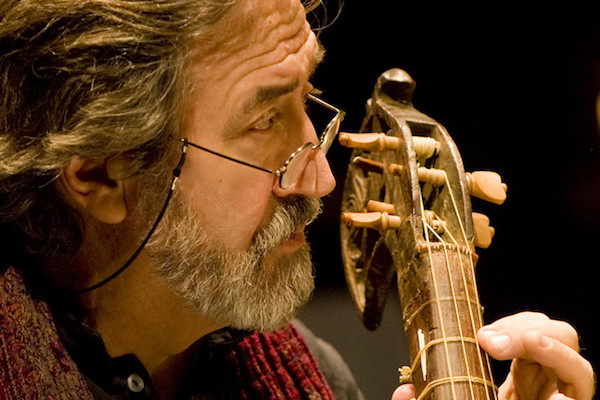
Jordi Savall
Born on August 1, 1941, in Igualada, near Barcelona, Spain; married Montserrat Figueras (a musician), 1968. Education: Barcelona Conservatory, diploma; Schola Cantorum Basiliensis, diploma, 1970. Addresses: Record company---Naive Classique, 148 rue du Faubourg Possinière, 75010 Paris, France.
The works performed by Catalan gambist and conductor Jordi Savall span several centuries---from the music of Alfonso el Sabio, king of Castile and Léon, to the works of J. S. Bach---bringing to life the splendor and passion of bygone eras. A performance by Savall is more than a musical experience: the extraordinary power and beauty of his playing magically removes the listener from the flux of time, creating a space in which such obstacles to enjoyment as historical distance, stylistic peculiarities, and idiomatic enigmas simply disappear. For example, historical periods, including the Baroque, have often been described as "distant." Indeed, the physical and mental universe of seventeenth-century France may seem distant to a person living in the twenty-first century. But that distance vanishes when Savall plays the music of the great French master of the bass viol, Marin Marais.
First of all, Savall's main instrument is the viola da gamba, or bass viol (he also plays the smaller viols), not as a quaint relic that needs some special justification or antiquarian explanation. True, in the late 1700s, the viola da gamba---which is not a different kind of cello, but a member of the viol family, a distinct group of instruments of varying sizes---was supplanted by the cello, as the latter instrument, with its potential for virtuosity, satisfied the requirements of changing musical styles. However, to Savall, his instrument is irreplaceable. In fact, according to Savall, the viola da gamba has a particular sonic richness that the more "modern" cello lacks. As Savall explained to Chris Pasles of the Los Angeles Times, the "viola da gamba is totally different from a cello. It's closer to the lute---a lute with a bow, in fact. With six strings, frets like a guitar, a softer sound, it's more rich in different colors." Instead of merely reproducing a particular musical composition, Savall captures and expresses the timeless humanity of the music, illuminating the particular composition as a universally comprehensible document of the human experience. A case in point is Savall's mesmerizing performance of Marais's musical description, found in Book V of his Pièces de viole, of his gallstone operation. Written under the influence of François Couperin's character pieces, this extraordinary composition, especially in Savall's version, remains one of the most suggestively dramatic works of Baroque music.
Born in 1941, near the Catalan city of Barcelona, Savall began his musical education at the age of six. After graduation from the Barcelona Conservatory, where he studied the cello, Savall went to Basel, Switzerland, where he studied the viola da gamba with August Wenzinger at the Schola Cantorum Basiliensis, receiving a diploma in 1970. His other teachers included Wieland Kuijken, in Brussels. In 1973 Savall took over Wenzinger's post at the Schola Cantorum. By the early 1970s, Savall was already considered one the greatest viola da gamba players. In addition, he worked hard to enrich his instrument's repertoire, rescuing many works from oblivion and performing and recording numerous forgotten compositions. Savall thus exemplified, as he still does, the learned performer, who constantly studies the vast field of old music, bringing many neglected compositions to light. Among these lesser-known compositions are works by Marais, whose rich and fascinating oeuvre includes more than 500 pieces for viola da gamba and keyboard accompaniment, assembled in five books of his Pièces de viole.
In 1974 Savall and his wife, soprano Montserrat Figueras, founded Hespèrion XX---later, in the twenty-first century, known as Hespèrion XXI---an international ensemble that has gained great acclaim for its extraordinary performances of music from the Middle Ages to the Baroque. In 1987, returning to his native city after his extensive sojourn in foreign lands, Savall formed the Capella Reial de Catalunya, a vocal group that, under his direction, has performed and recorded music by Tomáa Luis de Victoria, Francisco Guerrero, and Claudio Monteverdi.
In 1989, further expanding his repertoire and musical activities, Savall founded the Concert des Nations, an ensemble consisting of younger musicians from Spain and Latin America. Under Savall's direction, this orchestra, which plays on period instruments, has recorded a variety of works from the Baroque and Classical periods.
Savall's career received a tremendous boost when film director Alain Corneau asked him to play on the soundtrack for Tous les matins du monde, his 1992 film about Marais and his teacher, Sainte-Colombe. Based on Pascal Quignard's admirable 1991 novel--available in English as All the World's Mornings--which imagines the life of the mysterious Sieur de Sainte-Colombe, the film is a spell-binding portrait of seventeenth-century France with the music, performed by Savall, providing a foundation for the narrative. Savall himself indirectly inspired Quignard's novel: it was a 1976 recording by Savall that introduced the writer to Sainte-Colombe's music. The music that Savall performs on the soundtrack is mostly by Marais and Sainte-Colombe, though it also includes a segment of François Couperin's deeply spiritual Leçons des ténèbres. Savall is inspired in his performance of the heartrending Tombeau les regrets, which, in Quignard's imagination, Sainte-Colombe played to conjure up the spirit of his deceased wife. In Savall's hands, this music, which appears as a leitmotif throughout the film, graces the rich tapestry of the film as a mysterious aura.
In 1988 the French Ministry of Culture awarded Savall the title of Officier de l'Ordre des Arts et Lettres. His recordings, numbering more than one hundred, have received many awards, including the Double Disc of Gold and the Diapason d'Or. In 1997 Savall's recording company, Astrée, founded a separate label, Fontalis, for his recordings. The following year, Savall started his own label, Alia Vox, which later reissued many of his earlier recordings at an affordable price. Savall's remarkable career is more than a personal triumph: thanks to his superb musicianship, the viola de gamba has emerged from the shadows of the past, becoming the instrument of choice for many younger performers. For such performers, the rich repertoire of the Renaissance and Baroque offers not only infinite artistic challenges and possibilities but the opportunity to abolish the somewhat artificial barrier separating "early" music from the rest of the musical tradition. (Zoran Minderovic)
This album contains no booklet.











